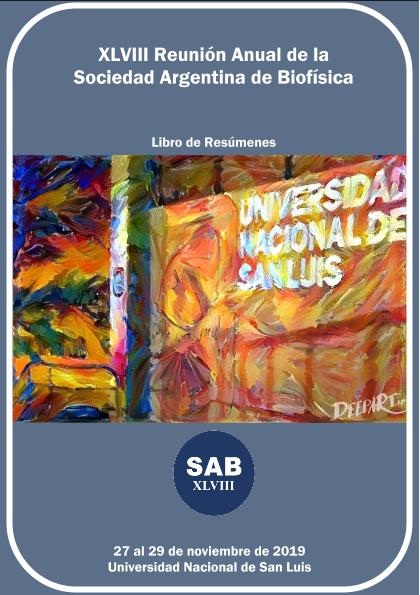Evento
Changes in biophysical properties of membranes containing sphingomyelins with very long chain PUFA during cooling
Peñalva, Daniel Alejandro ; Hozbor, Federico Andrés; Aveldaño, Marta Isabel
; Hozbor, Federico Andrés; Aveldaño, Marta Isabel ; Antollini, Silvia Susana
; Antollini, Silvia Susana
 ; Hozbor, Federico Andrés; Aveldaño, Marta Isabel
; Hozbor, Federico Andrés; Aveldaño, Marta Isabel ; Antollini, Silvia Susana
; Antollini, Silvia Susana
Colaboradores:
Andujar, Sebastian Antonio

Tipo del evento:
Reunión
Nombre del evento:
XLVIII Reunión Anual de la Sociedad Argentina de Biofísica
Fecha del evento:
27/11/2019
Institución Organizadora:
Sociedad Argentina de Biofísica;
Universidad Nacional de San Luis;
Título del Libro:
Libro de Resúmenes: XLVIII Reunión Anual de la Sociedad Argentina de Biofísica
Editorial:
Sociedad Argentina de Biofísica
Idioma:
Inglés
Clasificación temática:
Resumen
Although the molecular changes that affect the spermatozoa of economically important animals, such as bull and ram, are of great research interest, changes regarding plasma membrane lipid organization as temperature decreases are still poorly understood. Gametes from these mammals contain sphingomyelin (SM) species very long chain n-3 polyunsaturated fatty acids (VLCPUFA). (e.g., 30:6 SM, 32:6 SM and 34:6 SM in ram), while in most mammalian cells SM typically contains saturated and monounsaturated acyl chains (C14 to C24). Also, these spermatozoa have three subclasses of choline glycerophospholipids (CGP) with docosahexaenoic acid (22:6n-3) ester-bound at the sn-2 position of glycerol, the sn-1 position being occupied by a C16 hydrophobic chain bound by an ester, ether o vinyl ether linkage. The aim of this study was to gain information about the supramolecular structural organization of these atypical lipids and their changes in the segregation, topological and thermodynamic coexistence during cooling. After isolation of these SM species and CGP subclasses from ram sperm by a combination of chromatographic techniques, large and giant unilamellar vesicles (LUVs and GUVs) were prepared and examined by fluorescence spectroscopy and microscopy. Whereas the 3 subclasses of CGP remained in the liquid crystalline state, the SM species 30:6 SM, 32:6 SM and 34:6 SM showed gel-liquid crystalline transition temperatures within the 40 °C - 5 °C range (5, 15 y 29 °C, respectively). In ternary PC:Cholesterol:SM systems, 32:6 SM and 34:6 SM showed propensity to promote cholesterol-SM domain formation during cooling, although at different temperatures and rates from those of 16:0 SM, here used as a positive control. In GUVs containing 32:6 SM, the lateral lipid segregation and the process of dye efflux started at comparable temperatures. This coincidence did not occur in GUVs containing 16:0 SM. Thus, whereas at physiological temperatures VLCPUFA containing SM molecular species are in a fluid state and are not involved in cholesterol rich domains, this state is deeply altered at the low temperatures at which these gametes are usually preserved, thereby affecting their membrane stability.
Palabras clave:
sperm
,
cholesterol
,
sphingomyelin
,
GUVs
Archivos asociados
Licencia
Identificadores
Colecciones
Eventos(INIBIBB)
Eventos de INST.DE INVEST.BIOQUIMICAS BAHIA BLANCA (I)
Eventos de INST.DE INVEST.BIOQUIMICAS BAHIA BLANCA (I)
Citación
Changes in biophysical properties of membranes containing sphingomyelins with very long chain PUFA during cooling; XLVIII Reunión Anual de la Sociedad Argentina de Biofísica; San Luis; Argentina; 2019; 51-51
Compartir



